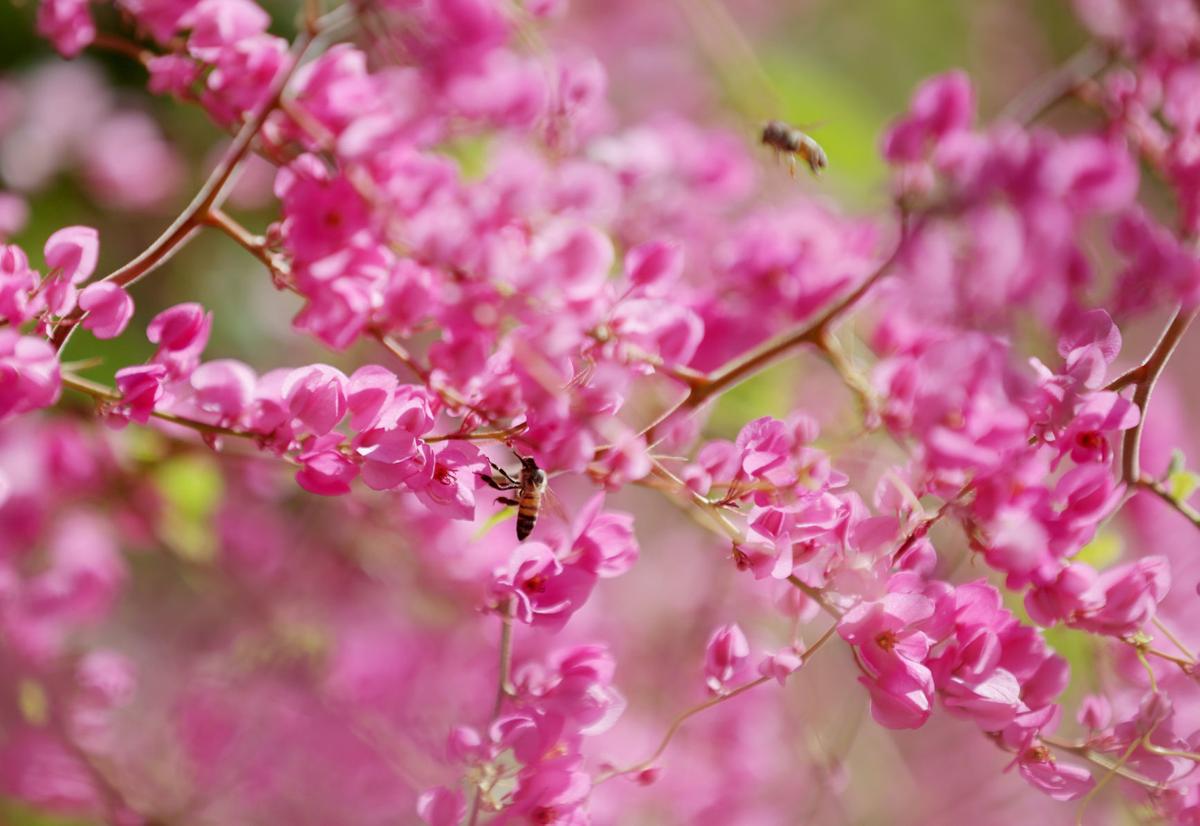Vines are great for dressing up walls, fences, containers and trellises. If allowed to grow up a pergola, they can provide cool, green shade. They’re also great for areas without much space, like decks, balconies along driveways, and other narrow passageways. Some produce edible fruit, while others are great for birds and pollinators.
Here’s a selection of some cool vines you can try growing in your yard.
Snail vine (Vigna caracalla): An evergreen vine native to South America, this tropical beauty has coil-shaped purple and white flowers that are quite spectacular. Since it’s tropical, it can be borderline in some areas of Tucson. Put it in a warm spot with some sun and quite a lot of moisture. Eastern exposures should work well.
Passionfruit vine (Passiflora spp.): This perennial vine has spectacular flowers and some species produce edible fruits. Pollinators love the flowers. The vines are native to the Americas, so you should be able to find ones that are hardy enough for your location. They prefer part shade in our climate, or at least afternoon shade. It’s not very drought tolerant, so be prepared to water it deeply at least twice a week during the summer.
Crossvine (Bignonia capreolata): This flowering vine is a perennial, and has vivid yellow and orange trumpet-shaped flowers. It should be evergreen in our climate. The flowers will attract hummingbirds. It prefers afternoon shade in our hot climate. A morning sun exposure would be ideal, as it does need sun to produce flowers.
Canyon grape (Vitis arizonica): Native to the desert southwest in the U.S. and Mexico, this deciduous vine grows naturally in canyons up to 7,500 feet in elevation. It’s very cold-hardy, and produces edible fruit, but you need both male and female plants for this. It prefers part shade and likes regular water.
Queen’s wreath (Antigonon leptopus): If you want lots of pollinators in your yard, this is the vine for you. It is deciduous and can freeze to the ground in cold winters, but it grows back very quickly in the spring. It produces bunches of fragrant pink flowers. It likes full to part sun. It’s native to Mexico.
Yellow orchid vine (Callaeum macropterum): This vine is native to our area and prefers part shade but should tolerate full sun if adequately watered. It has lovely light yellow lacy flowers. It’s less hardy than some of the others, to around 25 F, but if the foliage dies back it should regrow the next season.
Arizona milkvine (Gonolobus arizonicus): This native is related to milkweeds so it will be great for your butterfly garden. It will act as a food and larval food source for queen and monarch butterflies. It prefers part-shade, and is native above 3,000 feet so will tolerate cooler microclimates.
Twining milkweed (Funastrum cynanchoides): Another native milkweed vine, this one has purplish-white flowers with sharp triangular petals. It prefers part shade, and is a moderate water user. It’s native to the Southern and southwest U.S. and Mexico. Like the Arizona milkvine, it is a host for queen and monarch larvae and adults.
Balloon vine (Cardiospermum corindum): Native to southern North America, Central America and South America, this vine produces unusual papery balloons which are reddish-green in color. It’s a good habitat plant for various native insects, and grows quickly. It prefers full to part sun.
Grapevine (Vitis vinifera): If you want to grow your own grapes here, you can — just choose varieties that require less than 200 chill hours. These are usually available in local nurseries in early spring. They generally prefer more acidic soil, so you could try growing them in a container; otherwise mulch with lots of organic matter after planting.





